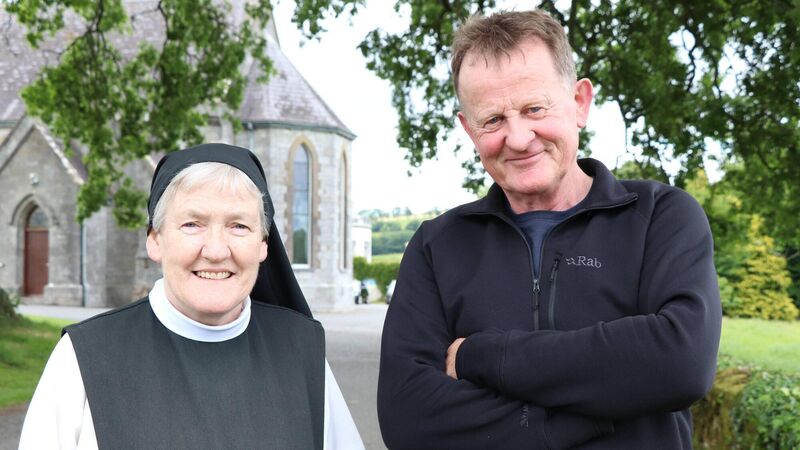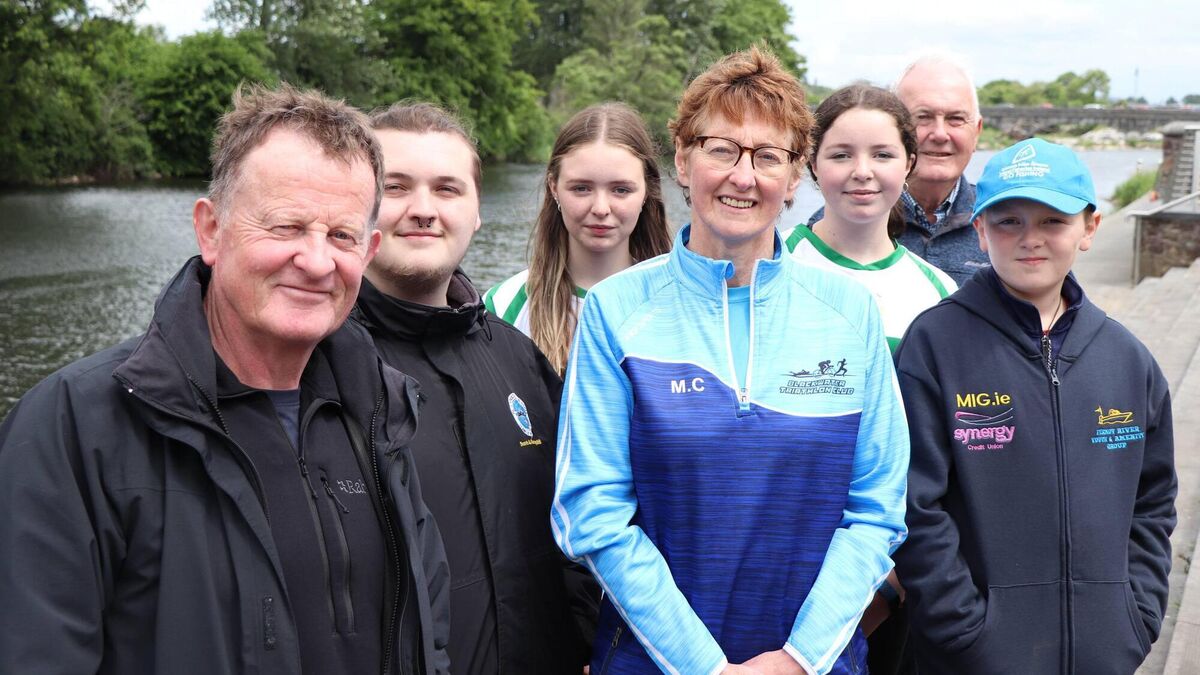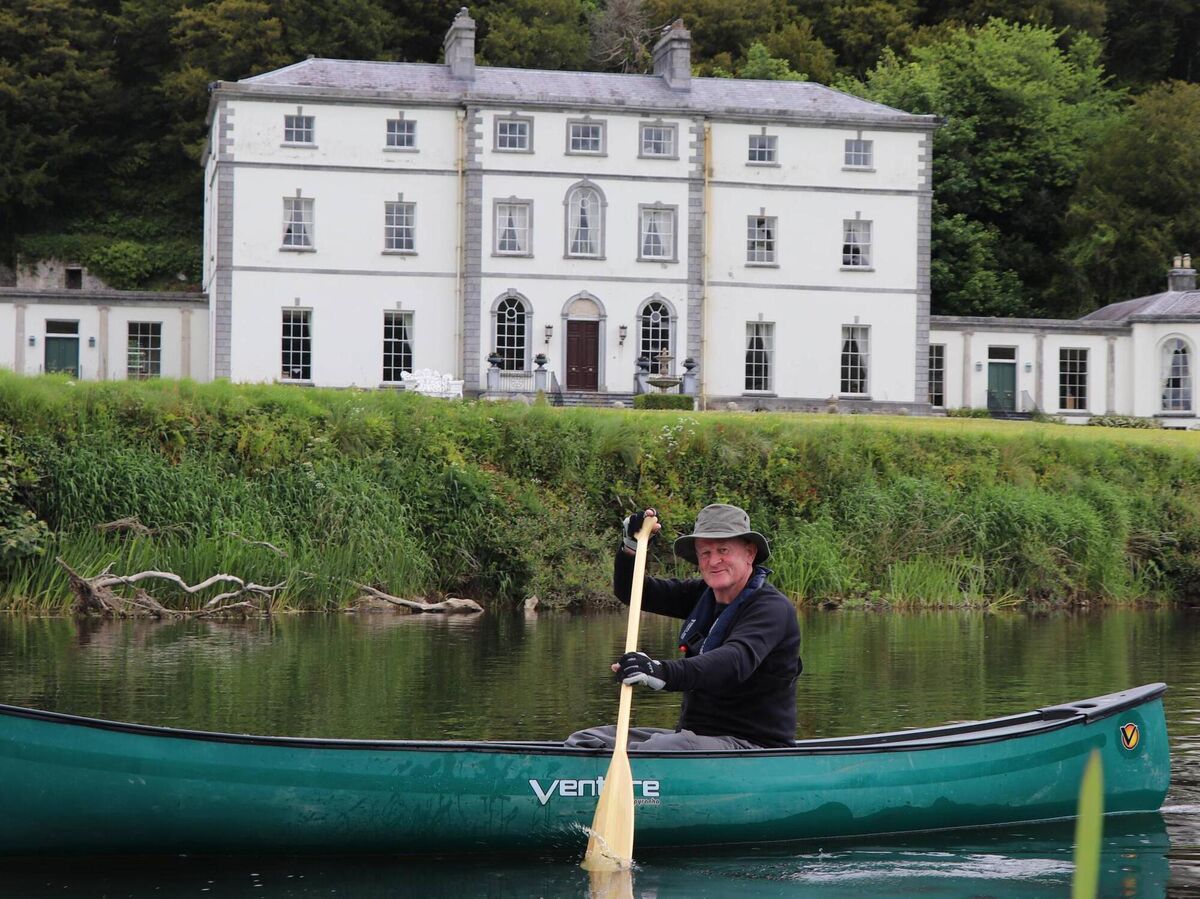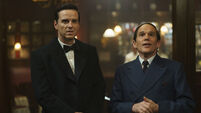Cois Móire, ep 3 review: Blackwater journey continues through Fermoy and Lismore

Cois Móire on TG4: Diarmuid Ó Drisceoil near the Blackwater with Sister Mairéad Nic Dhonnchadha of St Mary’s Abbey.
The beauty of a patchwork quilt comes to mind, watching Cois Móire, the TG4 documentary series that sees presenter Diarmuid Ó Drisceoil follow Annraoi Ó Liatháin’s footsteps along the route of the river Blackwater.
In episode three, Ó Drisceoil is on the tract of water approaching Fermoy, and then he’s on to Ballyduff, Lismore and beyond. Often he steps away from his canoe and – like a skilled quilter – collects interactions that touch on colourful episodes of our history and that illustrate the vibrant diverse activity happening today along the banks of this great Munster river.
Cois Móire juxtaposes stories of our heritage and accounts of modern communities along the river – from ancient Celtic burial grounds to millwheels, sport and drama clubs, to farming and fishing grounds, distilleries, castles and abbeys.

Early on, we’re at Labbacallee (‘the hag’s bed’), Ireland’s largest wedge tomb, where the skeletal remains of a woman were found in 1934.
In Fermoy, military history expert Aoife Bhreathnach talks about Bridget Dowling, married to an army sergeant, who in the last quarter of the 19th century, had five babies in four far-flung places – Bermuda, Nova Scotia, Egypt and Gibraltar – before returning to Fermoy where she opened a pub.
Hollywood connections are uncovered: the old railway bridge at Carrigabrick where many action shots from the movie The Blue Max were shot in the mid-‘60s. Ó Drisceoil saw the movie, aged 13, and recalls his boyhood delight that “something from Co Cork featured in a big Hollywood film”.

And at Lismore Castle an insight into sibling relations. Denis Nevin, who has worked most of his life at the castle, recounts how it was gifted as a wedding present to Fred Astaire’s sister Adele in 1932, how she liked guests to stay no longer than four days. On one occasion, Fred stayed a month, signing the visitor book as he left – underneath the entry Adele later wrote ‘I thought he’d never leave’.
Ó Drisceoil meets the players at Ballyduff, who stage one of Ireland’s most important drama festivals – and at St Mary’s Abbey, Glencairn, chats with Sister Mairéad Nic Dhonnchadha who says the river is why she came here from Connamara. He visits Clondulane Mill – at its peak it employed 30 men and helped feed the British army during the Napoleonic Wars.
Ó Drisceoil’s gleanings on his river excursions prompt another image – of beads being strung, gems of stories from past and present, threaded together. He consults no screen – no iPad or smartphone – instead he scans headstones, reads ruins and elicits stories in conversation. The pace is measured, savouring, which feels exactly right because there are riches to discover here and that takes time.





